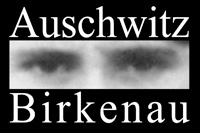




Liberation of Auschwitz
Initial camp evacuation and eliminating the traces of the crimes
From August 1944 through mid-January 1945 the Germans transferred approximately 65 thousand male and female prisoners out of Auschwitz to be employed as a slave labor force for various enterprises in the depths of the Third Reich. They also started the initial elimination and destruction of the evidence of their crimes – among others, the prisoners’ registers and records of the Jews murdered in gas chambers were burnt. Movable property of the camp was transported away, mainly large amounts of construction materials as well as goods plundered from the victims of mass murder. The technical elements of all gas chambers and crematoria but one were dismantled or disassembled by the end of the year.
Camp liquidation
In mid-January 1945, when the front line was broken by the Red Army and its troops were approaching Cracow, 70 km away from the camp, the final evacuation of prisoners started. From 17 to 21 January 1945 approximately 56 thousand male and female prisoners were taken out of Auschwitz and its sub-camps in marching columns. Having reached the indicated railway station they were transported farther to the west in freight cars. Both evacuation routes, by rail or on foot, were littered with the bodies of prisoners who had either been shot or had died due to exhaustion or cold. An estimated 9 thousand prisoners of Auschwitz died during that operation.
On 20 January 1945 the SS blew up the gas chambers and crematoria that had already been put out of service some time earlier while the last one, still fully operational, was blown up on 26 January. On 23 January the warehouses, where the goods belonging to the victims of the extermination were stored, were set on fire.
Liberation
After the final evacuation almost 9 thousand prisoners, mostly the ill and exhausted left behind in the camp by Germans, found themselves in an uncertain situation. Approximately 700 Jewish prisoners were murdered in the period between the forced departure of the last evacuation columns and the arrival of the Soviet soldiers. It was only a matter of coincidence that the most of the remaining prisoners survived.
On 27 January 1945 the Red Army entered the area of the town of Oświęcim, facing the resistance of the retreating German troops. More than 230 Soviet soldiers died while liberating the area. Approximately 7 thousand prisoners lived to see the liberation of the Auschwitz I, Auschwitz II-Birkenau and Auschwitz III-Monowitz camps. Approximately 500 other prisoners were liberated in the sub-camps before 27 January and shortly after that date.
The ill were taken care of by several Soviet field hospitals and the so-called Camp Hospital of the Polish Red Cross which was set up by Polish volunteers, mainly residents of Cracow and nearby towns. 4.5 thousand mostly Jewish survivors, including more than 400 children, citizens of more than twenty countries, were treated there.
Those prisoners who were in a relatively good physical condition left Auschwitz immediately after the liberation, going home on their own or in organized transports. Most patients admitted to hospitals did the same three or four months later.
